
Korea has been in the international news earlier this month due to torrential monsoon rains which have caused widespread flooding, landslides and significant damage. Images and footage from South Korea were shocking but also, perhaps, unnerving for those making preparations around the globe for the upcoming World Scout Jamboree (WSJ). As packing continues and scout contingents begin their journeys, will there be more rain?
Yes, it is raining this weekend as the frontal monsoon rains have moved back up from the south after a lull. However, this is not a repeat of the impactful rains from earlier in July. This is more usual seasonal rainfall which should be easing as the jamboree begins.
Heavy rainfall has been affecting South Korea since early July. "At one stage, more than 5.5 inches (140mm) of rain fell per hour. This is the highest hourly downpour measured in the capital since 1942." Seoul, DisastersCharter
Trains were halted as flash flooding occurred. Over 10,000 people were evacuated across the country with roads washed away and properties damaged and half of those are still displaced. The military has been helping the recovery with the main focus being across central provinces of North Gyeongsang and North & South ChungCheong. These are more mountainous inland areas, prone to landslides and very different to the coastal area of SaeManGeum, North Jeolla where the WSJ event will take place.

The Korean Meteorological Administration (KMA) said that up to the 15th July, there had been around 30 to 40% more rainfall than average in the central and southern regions. Around 470 to 490mm of rain fell in under three weeks, which is considerably more than average for the entire monsoon season. There has been extensive crop damage including to rice fields and orchards. Also, thousands of livestock have drowned in the flooding with damage to significant cultural monuments across the country.
“We are saddened by the scenes of flooding in some parts of Korea, a long way away from the 25WSJ site. Keeping everyone safe is always our priority in our preparations.” UK Contingent
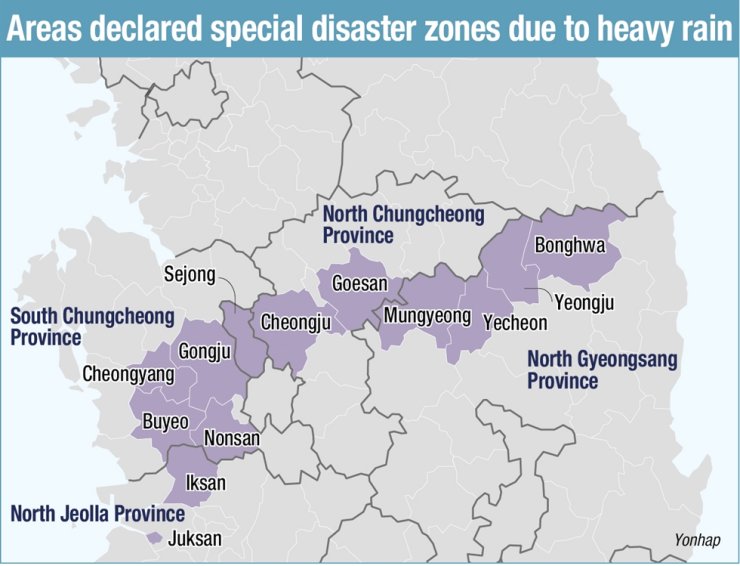
Thousands of young people from the UK aged 14 to 17 and their leaders will travel to South Korea later this month as the UK Contingent to join the huge event. More than 40,000 Scouts from 150 countries around the world will gather in Korea for the 25th World Scout Jamboree in summer 2023 which occurs in different places every four years.
Preparations for the Korean summer weather have been a key part of the packing that is going on. The humid heat is one key point and the seasonal heavy rains the other. Once the Scouts and Explorers are out there it will probably just be the leaders and organisers keeping a weather eye out. The participants will be far too busy having an experience of a lifetime to give it all too much thought. Busy with traditional programs such as crafting, activities and high-tech programs like moving robots using coding technology, drone displays and virtual reality.
Hopefully, they will change their socks and there have been instructions about washing clothes whilst away for a few weeks. Getting things dry could be an issue in such high humidity or as the rains return.
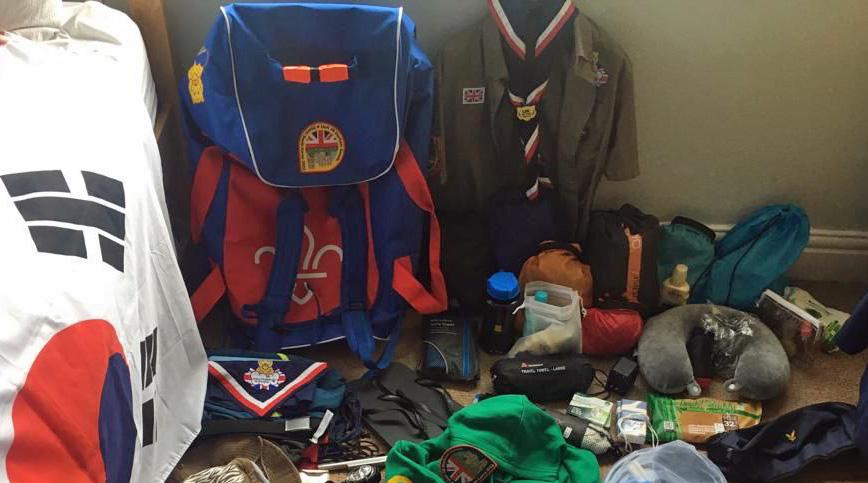
SaeManGeum is near Gunsan in North Jeolla (Jeolla-buk) in southwest Korea, on the west coast. The Jamboree site is reclaimed land linked to the longest man-made seawall in the world. This is the rainy season and more than half the annual precipitation falls in the monsoon season. Usually, a stationary front lingers across the peninsula for about a month in summer. Heavy rain is normal and expected, along with flooding. This monsoon wind is known locally as ‘Changma’ and is part of the summer Asian Monsoon system. It starts late in June and edges northwards for about a month. The end should coincide with the start of the jamboree, leaving humid conditions with occasional heavy showers rather than persistent rains. There have been years of planning for this massive event and serious work on the extensive site. This includes a comprehensive drainage system with pumps and temporary reservoirs, (do pack the mosquito spray). Each sub-camp has its own system which allows heavy rain to move away freely and the land is sandy.
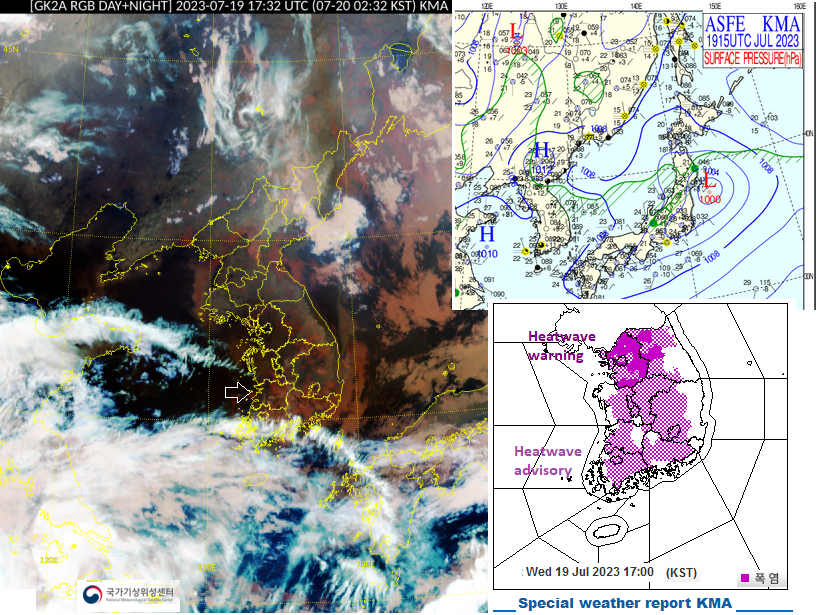
It has stopped raining, for a bit, and in the sunshine the temperatures have rocketed along with the humidity. There are heatwave warnings and advisories. August is the warmest month in Korea. Temperatures near SaeManGuem range from 22C to 32C usually. Inland, extremes in the province can reach 38C occasionally. Depending on which part of the UK units are from, this heat will need getting used to but it will be the humidity which could be impactful. It is also very warm by night which can hinder the adjustment. The WSJ is advertising Listening Ear services on-site, if participants just need someone to chat to during the event. Perhaps if they do get hot and tired by the middle of the event, or clothing gets soggy. High humidity can be wearing. The difficulty nowadays is that every young person has a mobile phone with them and the jamboree app is an integral part of the experience.
This might be tricky for parents back home, especially if it does rain heavily again and the Korean peninsula appears in the news. Do remember that Scout (and Guide) leaders are incredibly able and practical people and the contingency planning will be intense. Also, as the unit leaders on site act In loco parentis (there was a form to sign) and can see the participants, the environment and the setup, make sure it is them that the young people are talking and listening to, not just texting you back home with scant UK Facebook rumour. They are seeing the world and are very lucky to have a place.
There is a temporary weather observatory on-site, seven cooling centres and over 300 indoor evacuation shelters if needed. The evacuation plans (if ever needed) are detailed with many safety measures and long risk assessments from the various organising committees and plenty of input from expert agencies.
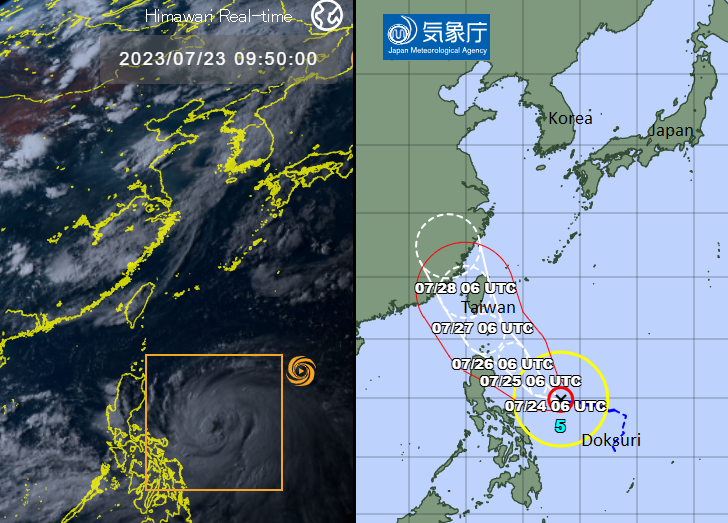
The Japanese Met. Agency has responsibility for cyclone/typhoon warnings in the region, with Doksuri well south
Keeping their kit dry will be one challenge. Usually, the rain comes in sudden heavy downpours and then it’s gone. An umbrella may help but it will be far too hot and humid for a coat. The kit list highlights dry bags and these seem very sensible if the ground does become muddy. Even if they aren’t keen, pack a hat and wear it. A burnt hair parting will really hurt and spending time in the first aid tent or worse, the camp hospital overcome with heat stroke, is just a waste of the trip and all those fundraising efforts.
Water bottles will be important. Keeping rehydrated and checking that wee is pale in colour will help everyone stay well. It will be hotter than usual and more humid, that combination could make anyone feel a bit strange yet there will be lots to do. Finding shade or cooler areas will be important and wearing sunglasses to protect eyes from the UV rays.
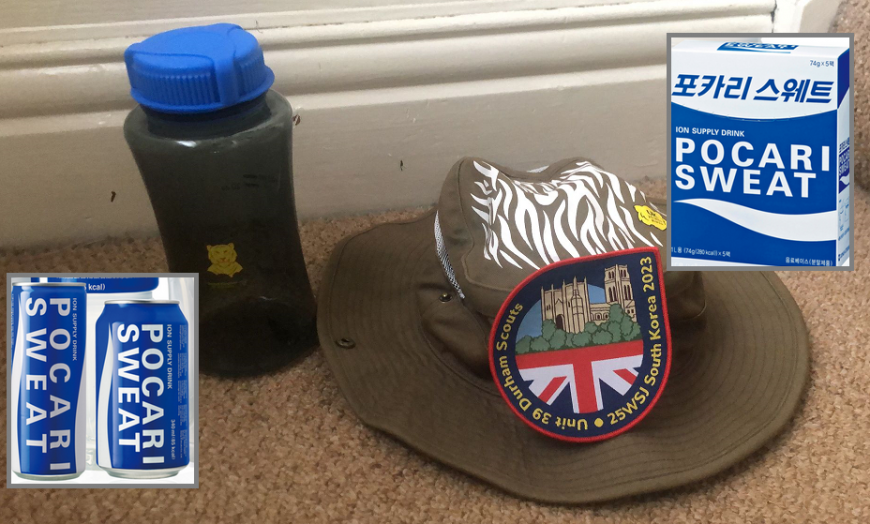
There is an official beverage of the WSJ called Pocari Sweat, which might sound a bit offputting at first. Its ingredients make it ‘a fast and efficient source of hydration’ which could help active Scouts. It is a popular ion supply drink from the leading drinks maker Dong-A Otsuka. They have been running a campaign with the Republic of Korea’s government called “Beat the Heat”. Countries around the world are making new policies and campaigns to help people adapt and stay safe as our climate changes.
It’s interesting that Korea changes seasons once certain thresholds are met. Looking at the dates you can see a drift. WSJ Bulletin “When comparing 30 years from the past (1920-1949) with the last 30 years (1990-2019), summers seemed to be getting longer and falls and winters seemed to be getting shorter…Spring and summer tend to start early, and fall and winter tend to start late”
Climate records show that the amount of precipitation has increased in the past 100 years but it falls on fewer days. So, there is heavier rainfall when it comes. “Heatwaves and torrential rains are on the rise”. A message which fits with Europe as well.

The usual annual rainfall for central and southern parts of Korea is 1000 to 1800mm. The average annual rainfall of NW England and N. Wales is 1340mm by comparison but it is quite well spread through the year.
A few of the more recent rainfall extremes from KMA, over the psat 100 years in Jeollabuk-do (as of Sept. 1, 2020).
Aug. 3rd 2005 - 249.5mm total precipitation in one day, 2nd highest on record after 1951.
July 25th, 2003 - 87.0mm in one hour, 3rd highest on record.
“We’ll all need to be prepared for high temperatures, high humidity, rain and being very busy! “ UK Contingent
There has been an unusually high amount of rain for South Korea in this monsoon season already, with significant rain for the jamboree site. Heavy rain was expected and there are plans in place to cope with more rain. The motto is “Be Prepared!” All to help make the WSJ an incredible event.
The KMA is warning of more rain. The radar image on the top picture shows the return of the monsoon rains, as forecast but this is not the same as the torrents from before. There has been a hot, sunny and humid lull with high pressure to the north around the 20th of July. This resulted in heatwave conditions further north now it is back to cloudy, humid conditions with outbreaks of rain. Low pressure has helped move a frontal band northwards resulting in heavy rain across the country this the weekend. You can see the cloud layer on the top NASA satellite image from 19th July. Looking at the Mid-Term forecast, there are early signs of the rain easing off for the last weekend of July.
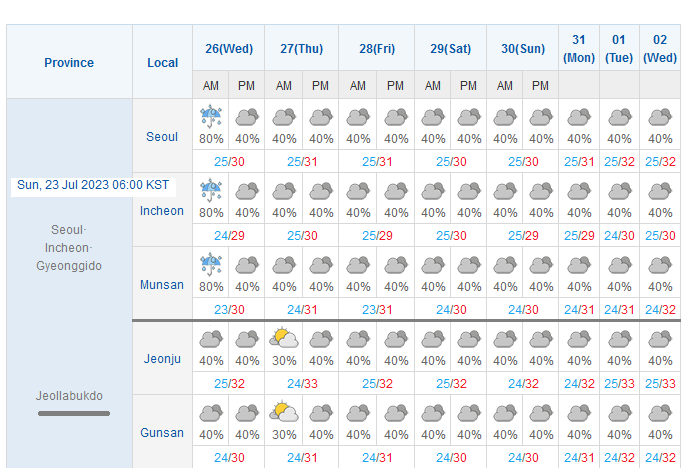
The Korean Meteorological Administration (KMA) website has an English version and search area for regions. Use Jeollabuk-do then Buan-gun. There is satellite and radar imagery across the region.
For those at home, don't fret. Follow the kit list, know it will be hot, humid and there will be rain but also for those attending the 25th World Scout Jamboree, it is going to be an incredible, enormous experience. Think big. Dream wild. Act Together.
Loading recent activity...